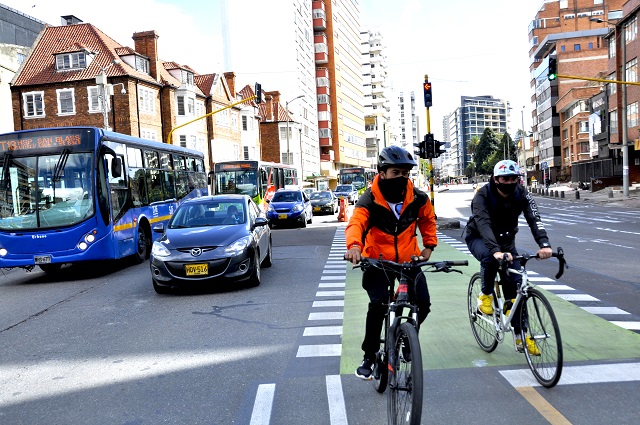
Just before she took office in January 2020, Mayor Claudia López committed to redesigning a major artery of Bogotá into a “green corridor” for sustainable, active mobility. She also committed to a comprehensive participatory planning process – a potentially daunting task in a city of 9 million.
Known since the 16th century as Royal Street, Avenida Séptima is considered by many to be the most important road in Bogotá, covering 23 kilometers and crossing the eastern portion of the sprawling city. It is perhaps the only corridor that traverses every income level of the city, from the poorest to the extremely wealthy. It is also the most contested space in the city.
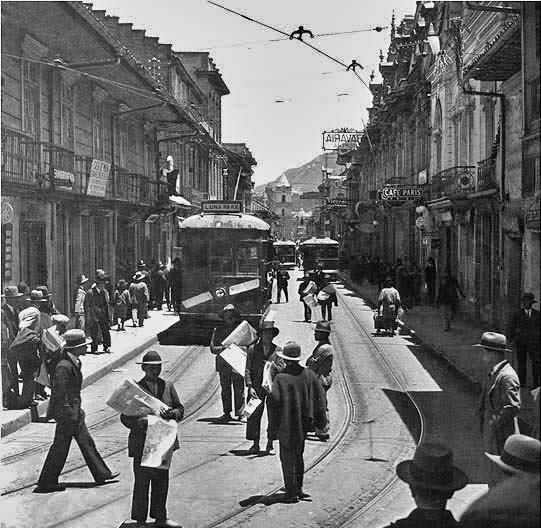
Over the last 70 years, Séptima has become a six-lane bottleneck, with cars creeping by at an average of 6 miles per hour. Public transit is not a priority, and what transit there is travels at the same speed despite an orange line painted to mark an ineffective preferential lane. Bicycles have only recently received a boost in safety and speed after the city reallocated right of way in implementing emergency bikeways in March 2020 as a response to the COVID-19 pandemic.
Seven attempts have been made to modernize and redesign Séptima since 2000, each only succeeding in further embittering relations between the city and residents along the avenue, who did not see their values and desires reflected in proposed designs. The last attempt culminated in a lawsuit by several parties against the city in late 2019 over lack of a sufficient process for community input.
When Mayor López announced the new green corridor project in early 2020, she promised it would be built on a comprehensive participatory process, one that directly solicited proposals from residents describing what changes they would like to see – with the caveat that priority would be given to “green” modes of transportation like walking, cycling and electric mobility. Historically, the voices of Séptima’s wealthy, which tend to promote more access for drivers, had effectively drowned out the views of lower- and middle-income residents, who take 69% of all trips on the avenue using public transportation.
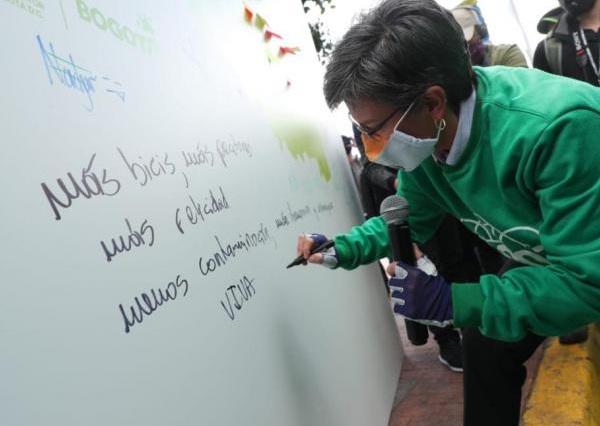
In October, the city launched Séptima Verde, or Green Séptima, a comprehensive campaign calling for written proposals to reimagine Séptima. Because priority would be given to more sustainable modes of transportation, proposals to redesign the avenue would need to reallocate existing street space, which created a challenge for community engagement. Without clear visual representation, it’s difficult for residents to see what’s possible in the space.
Enter Streetmix, an open-source online platform that allows anyone with an internet connection to easily create and edit existing streets using drag and drop tools and a menu of pre-configured mobility options. Launched in 2013 as a result of a Code for America exercise in civic programming, Streetmix has become an invaluable tool for users as diverse as experienced urban planners to community organizers and everyone in between. Over the past few years, NUMO, the New Urban Mobility alliance, has supported and worked with Streetmix to develop graphics to represent autonomous vehicles, a street capacity indicator (the maximum number of pedestrians that can travel in one hour along a sidewalk) and a machine-learning initiative to interpret the “joyfulness” of a street.
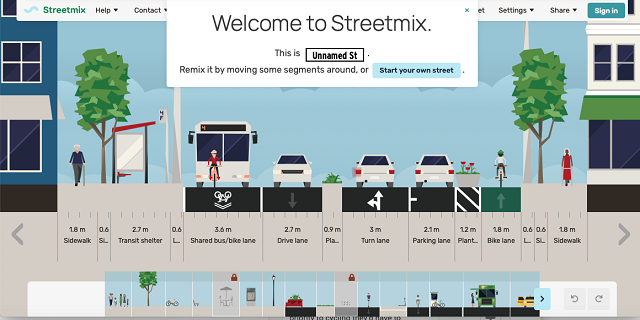
For two weeks in October 2020, the city of Bogotá partnered with NUMO to build a custom version of Streetmix (with help from programmers at TAK Colombia) to use in the participatory process for Séptima Verde. Using the platform, participants could easily create and submit their own proposals to indicate their vision for 15 key locations along the avenue, which were measured to scale and recreated online. This version of the platform also included life cycle emissions analysis from the International Transport Forum and capacity estimations from the Transformative Urban Mobility Initiative to estimate CO2 emissions of the proposed street changes.
Over those two weeks in October, nearly 7,000 proposals from 6,000 users flooded in, 91% of which met all requirements. Streetmix saves each proposal in code, which allowed NUMO to create a precise breakdown of what participants wanted to see on the redesigned Séptima – from public transit to cycling and walking. This analysis provided the city with actionable ideas from those who actually use Séptima.
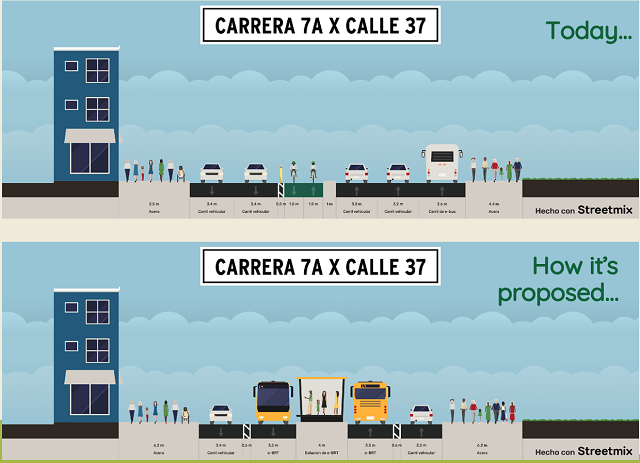
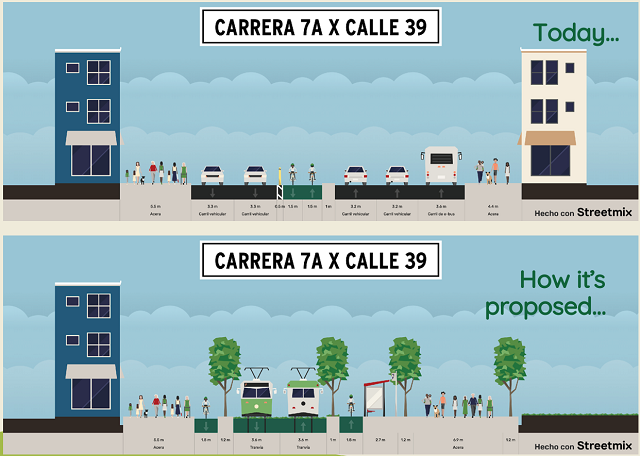
Results showed that participants favored active and shared modes, creating streets that in aggregate allocated 56% more space to bicycles and skateboards and 74% more space to public transit than the status quo, while reducing space for private automobiles by 19%. Overall, proposals reduced emissions by an average of 6% for the avenue and up to 26% in one segment. Participants preferred increasing capacity through prioritizing active modes and public transit. Finally, 248 proposals integrated autonomous vehicles, indicating Bogotá’s openness to change and innovation on this front.
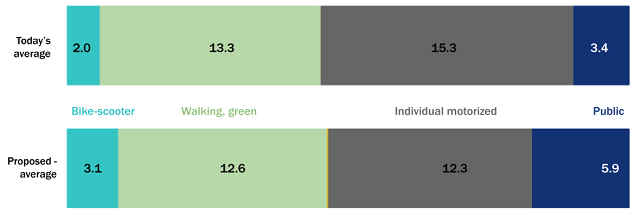
Thanks to the custom Streetmix tool, more residents than ever took part in this latest attempt to redesign Séptima Verde. The city is now using the feedback, along with relevant input from engineering work performed the previous year, to prepare final designs for the avenue, which are expected to be made public by the end of 2020. As for the digital design platform, Streetmix has plans to merge the to-scale streets onto the existing platform, so that anyone who would like to continue redesigning and reimagining portions of Séptima can do so.
As cities rethink how to allocate space and design their built environments to create safer, more sustainable, more equitable and joyful environments for residents, Bogotá’s experience can serve as a model for others. The success of this phase in the Séptima Verde redesign demonstrates that it is possible to better engage residents in reimagining urban spaces, to build the streets and cities people actually want to inhabit. And we can have some fun along the way, like the 235 proposals that included at least one magic carpet.

Carlos F. Pardo is Senior Advisor for NUMO, the New Urban Mobility alliance.








